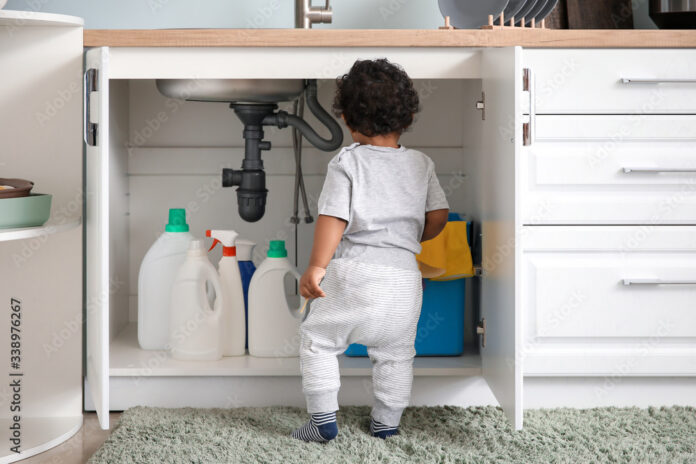Poisoning can occur from many sources and in many places: carbon monoxide, lead, spoiled food, impure water and more. This article focusses on preventing harm to children who may encounter poisonous substances in their homes.
Nearly nine out of 10 accidental poisonings happen at home, according to data from the U.S. Consumer Product Safety Commission.
For very young children, dangers lie in medications, household cleaning products, small batteries and improperly stored alcoholic beverages. Tiny hands are surprisingly strong, and little ones are curious.
It’s easy for a young child to mistake pills for candy, or brightly colored liquid cleaner for fruit juice.
Small batteries used in electronics or hearing aids are not only a choking hazard but contain chemicals that are harmful. The same is true for small magnets on household objects, such as the lids of insulated cups.
As children get a little older and are less closely supervised, prevention becomes even more important. Adventurous grade schoolers love to explore the basement, garage and farm buildings.
Adults need to protect children by locking up lawn and farm chemicals and directly teaching children the dangers of exposure to poisons.
When talking to kiddos about poison safety, cover different ways they could be poisoned. This includes ingesting poisonous substances (eating or drinking), inhaling the fumes of chemicals and, in some cases, skin contact with harsh chemicals.
Play the “what if” game with children: What if you find a little box in the corner of the attic with crunchy-looking nuggets? Should you taste them?
Assure children that if they forget your instructions about not eating or touching unknown substances, it’s important to tell you. The sooner an adult knows about it, the more quickly the poisoning can be treated.
So even with your best efforts, be prepared if a poisoning should occur. Add the Poison Help Hotline to your phone contact list: 800-222-1222.
More information and resources are available from the American Academy of Pediatrics and the Health Resources and Service Administration.
Ann Cochran is the health navigation coordinator in the Dallas County Public Health Department.

















